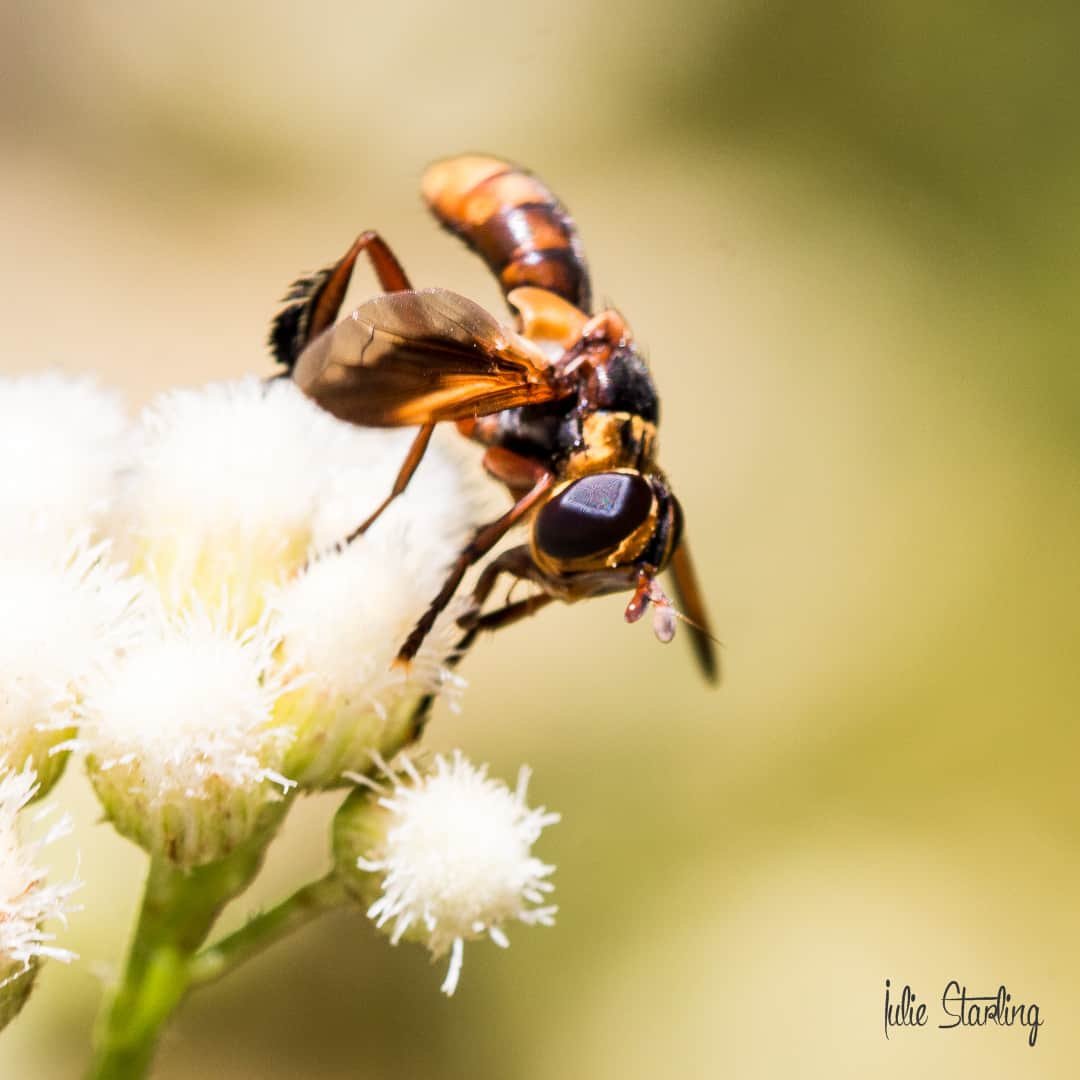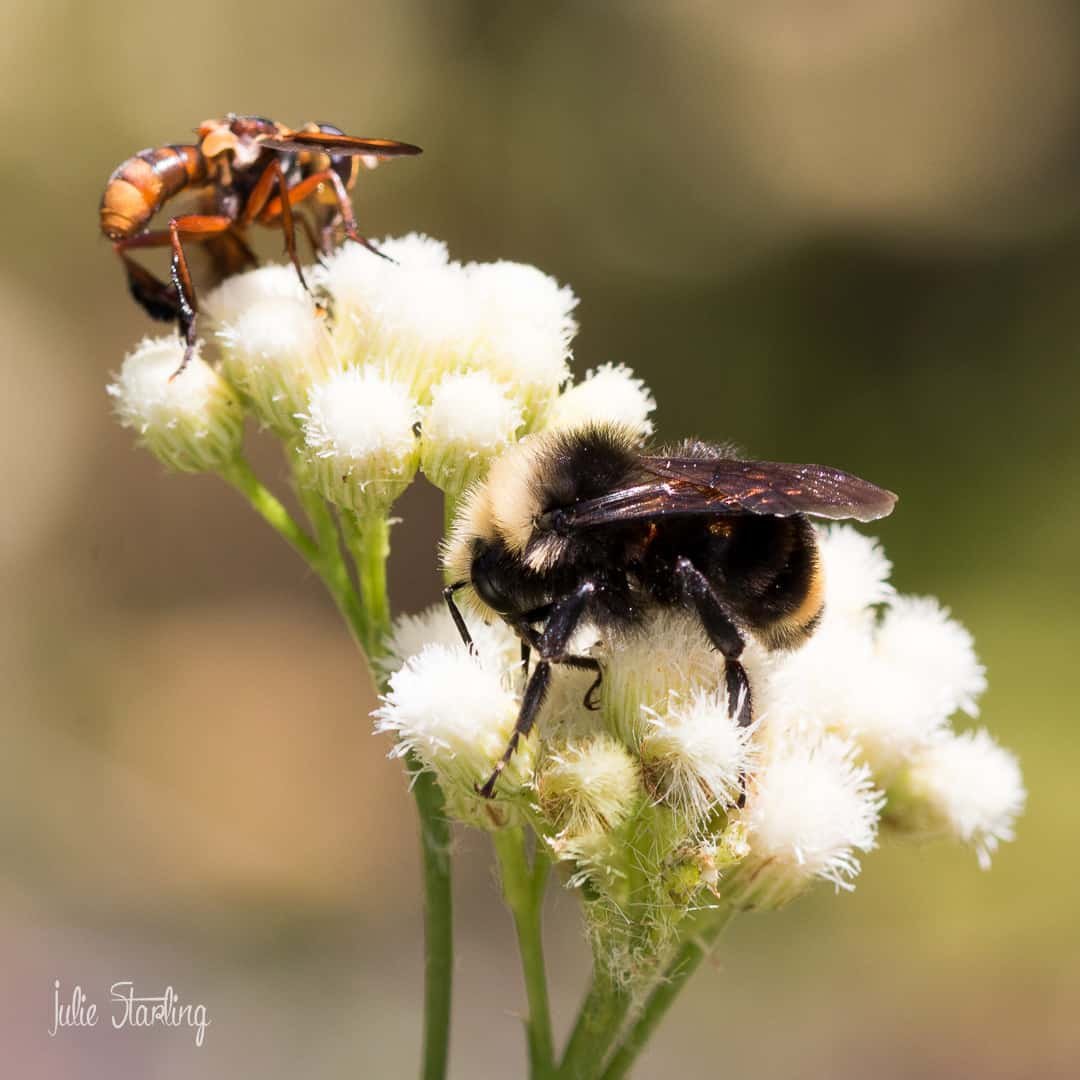A bumblebee and pal gather nectar together -230/365
As the Internet pointed out to me this week, Robber flies can be deceptively similar to yellow-faced bumblebees. But for sure, this little yellow cutie-pie in the front here is definitely a bumblebee due to the long bent antenae. Also good to know: bumblebees have four wings and Robber flies have two wings.
But that dude in back looks like a wasp, right? But it's not a wasp. But before I reveal what it is, I'd like to share this very important educational poster about wasps. It just may save your life.
The Internet is just full of excellent information!
I'm no entomologist. I just like bugs. A lot. Cute bugs. Ugly bugs. Any bug. And I like to shoot them. Photographically speaking.

Trichopoda, Feather-Legged Fly - 231/365
So this dude is not a wasp but a Trichopoda, known as the feather-legged flies or hairy-legged flies of the genus of tachnid flies. Adult feathered flies feed on flower nectar from plants like Queen Anne's Lace and Meadowsweet. The larvae are parasitoids of true bugs, such as stink bugs, leaf-footed bugs, shield bugs and squash bugs. The larvae itself doesn't kill the host, instead it feeds slowly on the host. Because the host does not die and continues to feed after the parasitization, the feather-legged fly doesn't always contribute to reducing crop damage. On the other hand, since the reproductive organs of the host bug atrophy during parasitization, pest population can decrease somewhat. When it completes its development and is equal to the size of the host, the maggot emerges from the host, killing the host. The maggot pupates in soil for two weeks before it emerges as an adult fly. There can be up to three generations per year of the feather-legged fly, depending on location.
The fly is most effective when it parasitizes nymphs, since 50% die before becoming adults and the remaining will become adults and die during overwintering, before laying eggs. Though pest population is marginalized, the feather-legged fly is a good bug to have around, especially for vegetable gardens.
Naturally, I had to get a shot of his hinie. Just because. Look at those feathered jodphurs! I'm a sucker for nice jodhpurs.



Eww. That's a gross life cycle lol. Interesting though. 🙂